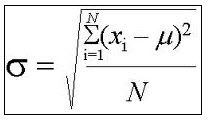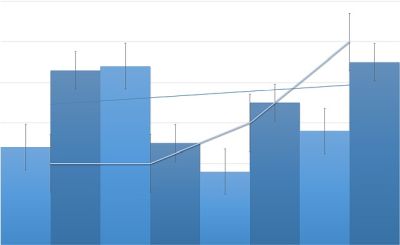Confidence Interval for the Difference Between Proportions Calculator
Instructions: Use this step-by-step Confidence Interval for the Difference Between Proportions Calculator, by providing the sample data in the form below:
Confidence Interval for the Difference Between Proportions Calculator
Confidence intervals are not only used for representing a credible region for a parameter, they can also be constructed for an operation between parameters. In this case, we are interested in constructing a confidence interval for the difference between two population proportions (\(p_1 - p_2\)), the following expression for the confidence interval is used:
\[ CI = \displaystyle \left( \hat p_1 - \hat p_2 - z_c \sqrt{\frac{\hat p_1 (1-\hat p_1)}{N_1}+\frac{\hat p_2 (1-\hat p_2)}{N_2}}, \hat p_1 - \hat p_2 + z_c \sqrt{\frac{\hat p_1(1-\hat p_1)}{N_1}+\frac{\hat p_2 (1-\hat p_2)}{N_2}} \right) \]where in this case the critical value correspond to critical values associated to the Normal distribution. The critical values for the given \(\alpha\) is \(z_c = z_{1 - \alpha/2}\).
Assumptions that need to be met
Similar as with the case for a confidence interval for a population proportion, this type of confidence interval also involves the fulfillment of assumptions. As with most of the parametric procedures, we to assume that normality is met. More specifically, we require that \(n_1 \hat p_1 \ge 10\), \(n_1 (1-\hat p_1) \ge 10\), \(n_2 (\hat p_2) \ge 10\), \(n_2 (1-\hat p_2) \ge 10\).
One thing to observe in this case is that you need to either have the summarized total number of favorable cases or the sample proportion. But this confidence interval calculator is not for raw data. If you have raw data, you need to summarize the data first by counting the favorable cases.
More Confidence Interval Calculators
if you are interested instead in a one population proportion, you should use this confidence interval calculator for population proportions . Or if instead you are interested in a population mean, you should try this confidence interval calculator for the population mean .


